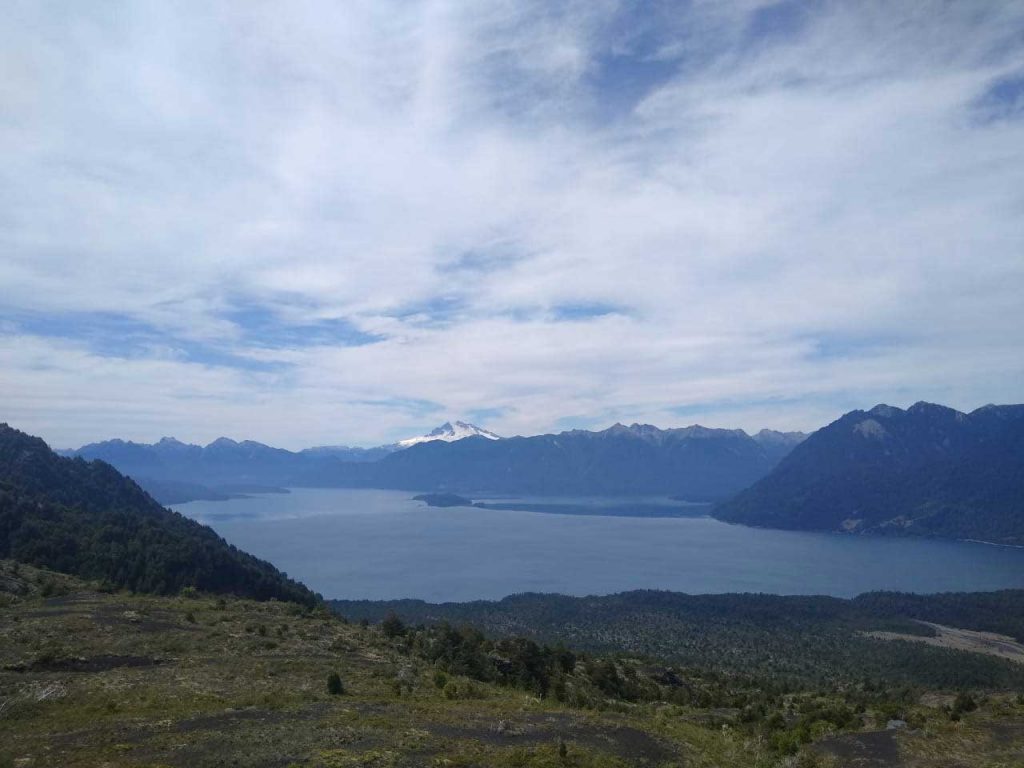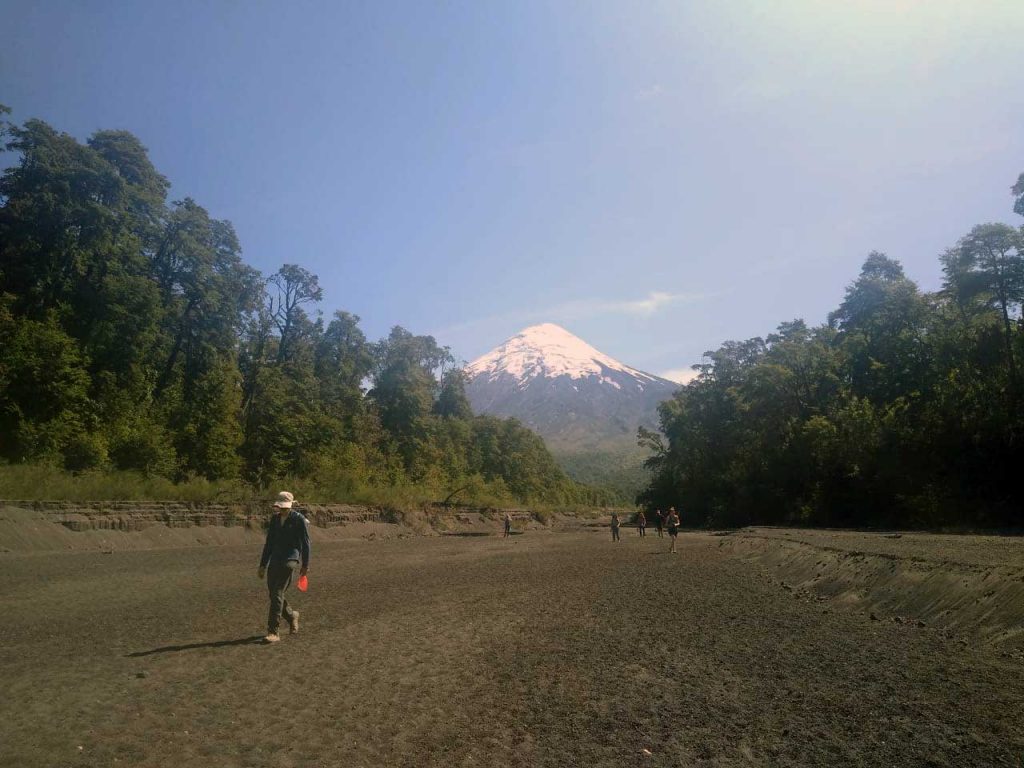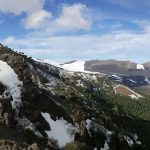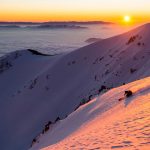Ask Upscape’s Manuel Bastidas if he’d like to talk about his favorite hikes in the Lakes Region and you can expect a very excited reply. He’s been hiking throughout Chile for many years and the south is his specialty. The Lakes Region holds a special place in his heart. Here are two hikes he thinks you should absolutely consider in this mid-south region of Chile, an area sculpted by volcanoes, weather, and the ever-present water that keeps this part of Chile so green.
Paso Desolación
Though there are a few different ways to do this hike in Parque Nacional Vicente Pérez Rosales, Manuel recommends a through-hike, starting at La Picada, and ending later at the mythic, turquoise Petrohué falls, which visitors can and should make a stop at. While other approaches to this hike are either mostly uphill, or require backtracking, starting at La Picada avoids both of those. The hike, when done from this entry point involves just enough of a climb to get a good warm-up, crossing over the pass for which the hike is named, and finally a long descent with stellar views of multiple volcanoes, and over Lago de Todos los Santos, which will be your reward when you get to the bottom.
The hike begins from near Puerto Fonck, on the Ensenada side of Lago Llanquihue. From here there is about a 45-minute relaxed uphill until you come out from the trees, crossing past the timberline. Here you cross over the pass, at about 1100 meters above sea level. There’s no chance you will forget you are in the lee of a volcano, with volcanic gravel underfoot, never mind the views yet to come.
As you continue on, take in views of the basaltic rock that define this landscape while to your right you get views of the northeast face of the perfect snowy cone of Volcán Osorno. This volcano has many lesser craters, which have left its profile intact, even as it continues to be an active volcano. To the left is Volcan Puntiagudo, so named for its famous point, and depending on the weather, the Casablanca and Puyehue volcanoes may also be visible. An hour further, majestic Volcán Tronador comes into view, and the broad expanse of the blue waters of Lago de Todos Los Santos lies below. Here is the perfect place to take a lunch break before continuing on.

After lunch, the hike turns more steeply downhill, following a rocky washout, down to the lake itself, which on a sunny day is perfect for taking a dip. You can continue walking a few more kilometers after the downhill and stop at the lake, or, if you’ve had enough, meet up with a local boatman who will take you down to the trailhead. From here, you can walk the catwalks over the falls at Petrohué for closeups with the rushing, bubbling, multi-layered falls.
Please note that we are not the only creatures who love this landscape. Typically from Christmas to January 20th in this area is horsefly season, so although we love the Lakes Region any time of year, this hike is not recommended for those few weeks when the tábanos are active. Depending on your hiking speed and photography habits, expect this hike to take 4-5 hours, which makes it perfect to combine with Petrohué falls.
El Solitario
Manuel recommends this hike for those just getting back to hiking, or who love hiking, but in small doses. It’s relatively flat and gives great views of the postcard perfect cone of Volcán Osorno from within the Vicente Pérez Rosales National Park, but with less up-and-down (and less time) than Paso Desolación (above). El Solitario is accessed from near the town of Cascadas, on the shores of Lago Llanquihue, which is Chile’s second-largest lake.
 The hike can be done in either direction, but beginning from the west, the hike heads first through dense and shady forest, which soon opens up. Very soon after starting the hike, after less than a kilometer there is a wooden terrace where you can see Volcán Calbuco, which last erupted in 2015. The route continues on towards the east, with mild ascents and descents, though with the loose volcanic rock, the walk takes a bit more effort than normal. Here there are forests of coigües and a few tepa and ulmo trees, and the eye-catching Chilean firetree, or notro, which blooms in October and November in bunches of elongated red flowers.
The hike can be done in either direction, but beginning from the west, the hike heads first through dense and shady forest, which soon opens up. Very soon after starting the hike, after less than a kilometer there is a wooden terrace where you can see Volcán Calbuco, which last erupted in 2015. The route continues on towards the east, with mild ascents and descents, though with the loose volcanic rock, the walk takes a bit more effort than normal. Here there are forests of coigües and a few tepa and ulmo trees, and the eye-catching Chilean firetree, or notro, which blooms in October and November in bunches of elongated red flowers.
There is one tricky part to this hike, for which it’s good to have a knowledgeable guide, which is a dry riverbed crossing, which is not that well marked. Upon finding the trail again and entering the cool forest once again, the last part of the hike is a long gentle downhill along a dry arroyo heading back towards the highway. The whole hike done in one direction (with drop off and pick up) takes about 1.5 hours, which makes it a great add-on as part of a full-day in the Lakes Region. Easily add El Solitario to a trip up the Osorno Volcano, where we recommend taking the ski lift to the top for tremendous views, or together with a trip to Petrohué falls as mentioned above.

